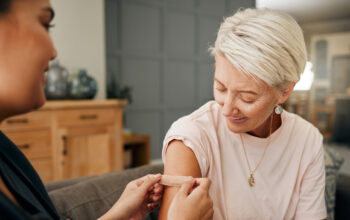How smart boxes are helping vaccine makers deliver more
Here we speak with Michaël Attlan, Head of the New Technologies (NT) Platform at Sanofi Pasteur, about how technology is transforming vaccine delivery. Prior to heading the NT Platform, Michaël led Sanofi Pasteur’s Traveler & Endemic Vaccine Franchise.
His work in yellow fever, cholera, rabies, and Japanese encephalitis reflects his and Sanofi Pasteur’s commitment to public health around the world.
The demand for vaccines
Vaccine demand has risen steadily for more than 25 years. With a greater range of world-class therapeutics now available, vaccine developers are looking for new ways to meet this demand. “Today’s players have to improve the vaccination experience,” Michaël says, “because people’s decisions will be made not only based on how well the vaccine performs, but also on how convenient it is to allow better handling and distribution.”
Today’s players have to improve the vaccination experience,because people’s decisions will be made not only based on how well the vaccine performs, but also on how convenient it is to allow better handling and distribution
Take flu, for example. It’s a seasonal illness, so large quantities of vaccines need to be delivered in a limited timeframe. This puts huge strain on manufacturers and pharmacists. Vaccine manufacturers need to produce millions of doses and then transport them globally in a temperature-controlled supply chain – a costly and complex process. Simultaneously, those handling or administering the vaccine often lack the facilities to store the volume of vaccines required.
The packaging of vaccines
Smart packaging is emerging as one of the solutions. Sanofi Pasteur has developed a new, smaller box for the safe delivery and storage of vaccines. CompactBox halves the size of the packaging allowing twice as many doses to be shipped at once, which can then be stored in half as much space. “We decided to make the box eco-friendly, so we removed all plastic. We have also made the box tamper-proof, which gives vaccine handlers and patients more confidence,” said Michaël. “Today, we have a box that is optimized for cold room storage, respects the environment, leads to lower freight costs and fewer planes to ship it worldwide in record timing, and is more secure.”
The CompactBox could be even smaller if it wasn’t for the need to display the vaccine’s statutory information for patients. “The innovation of using digital support helps meet this challenge,” said Michaël, whose team is exploring ways to access product-related details by scanning 2D barcodes or using interactive chips that are integrated into the carton. The idea is that anyone using a vaccine in the future can wave their smart device over the digital feature to reveal important information about the vaccine, including product authenticity and safety considerations. Michaël continued: “One day soon, people will be able to access relevant information related to pharmaceutical products on an internet device. Regulation will also need to evolve to allow access to online information through internet devices.”
The next stage of smart boxes jumps on the trends emerging in consumer retail where the use of digital labeling and information is growing. Technologies like Near-Field Communication (NFC), which allow communication between two electronic devices when they are placed closely together, are commonly used for public transport, banking and retail.
“I anticipate that in the short term, innovative dematerialized technologies for labeling, tracking, and usage information will become commonplace. The pharmaceutical industry and regulators need to jointly anticipate this move,” said Michaël. “The vaccine industry is adapting to these new consumer trends, meaning that we need to do what has been done by leading companies in other sectors, like Nespresso, Apple or Tesla by leveraging new technologies to deliver more value to end users, within the framework of applicable regulations.”
Author






